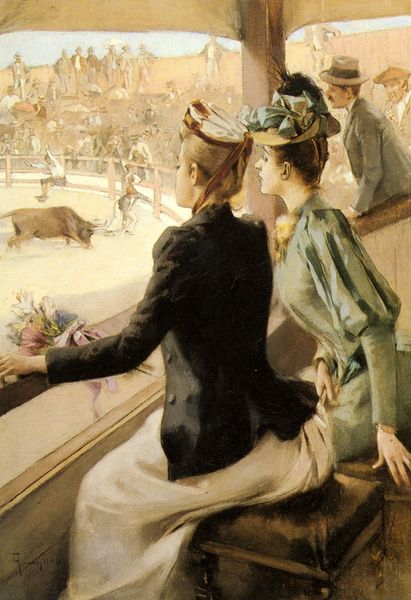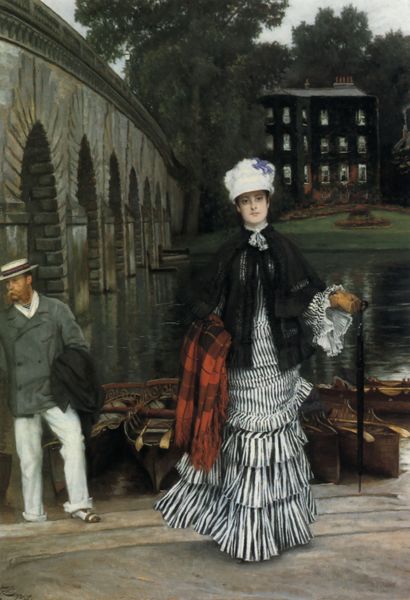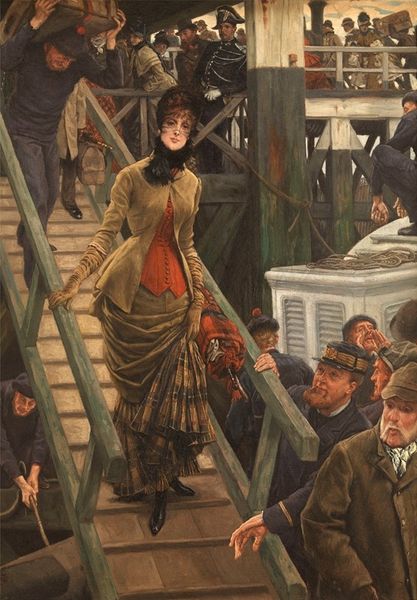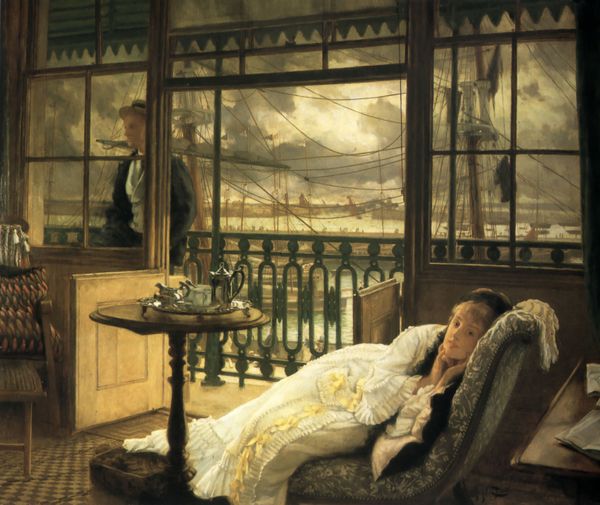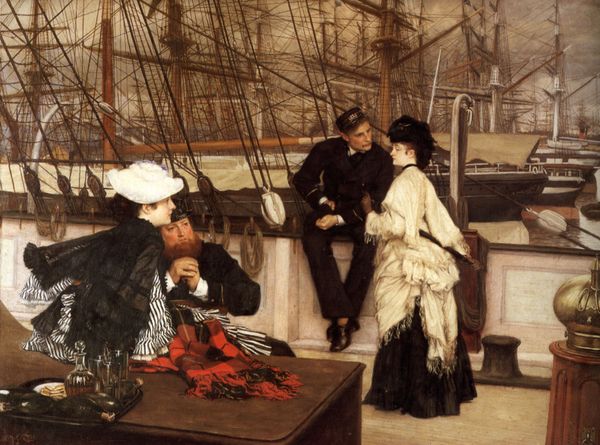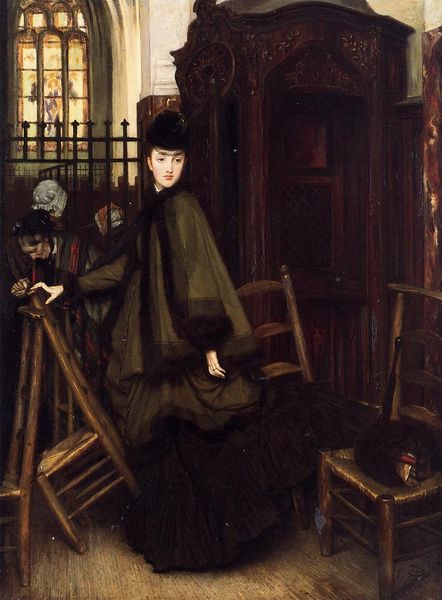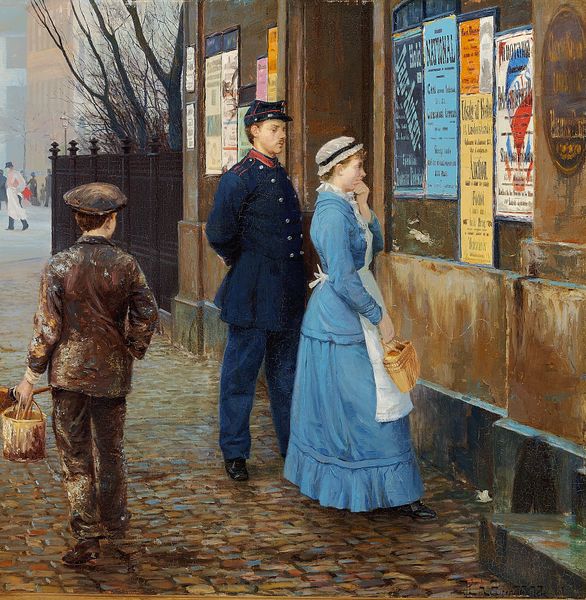
Copyright: Public domain
Curator: James Tissot’s "Waiting for the Ferry," painted in 1878, offers a glimpse into everyday life by the water. It's interesting how Tissot captures this moment with a mix of realism and the emerging Impressionistic techniques of the time. Editor: My first thought is quiet melancholy. The woman’s pose, almost slumped, really conveys a sense of weary patience. I can almost smell the salty air and hear the distant clang of ships. It feels more real than romantic, wouldn't you agree? Curator: I do. Tissot’s paintings were often social commentaries, depicting modern life with a certain detachment. Here, we see the material conditions: the bustling port in the background, perhaps the source of the family’s livelihood, the smoke, the practical clothing... the visual evidence suggests the context of their lives and circumstances. The painting on canvas demonstrates how even scenes of modernity and labor could still command aesthetic consideration in art markets of the era. Editor: Absolutely. It’s not idealized at all. There's almost something cinematic about it, as if he's capturing a scene in medias res. I mean, look at how he treats the light; It almost shimmers on her dress and has a really tactile sense of place and feeling. Makes you wonder about the relationship dynamics there too...The woman seems utterly disconnected from her active child! Curator: Tissot was known for his attention to detail in portraying clothing and settings. He deliberately presents the textures and labor and manufacturing around clothing and textiles as status in many cases. Here, you're getting an industrial atmosphere that, for many consumers and subjects, involved long production and procurement supply chains. It’s fascinating how he documented the burgeoning industrial landscape without romanticizing it, focusing instead on how individuals interacted within that context, even in leisure or transit activities. Editor: True. Though I keep returning to the narrative void, as it leaves my imagination to wonder why these people are where they are. What are they doing? And if she knew this would one day become an important historical image... what might that waiting look like now? Curator: It’s a window into a world undergoing profound shifts. Looking at "Waiting for the Ferry" offers a lens to understanding socio-economic textures and implications in ways many landscapes never could! Editor: Agreed, it is more than just pretty brushwork, and a wonderful moment to share as our audience reflects upon journeys taken and journeys still ahead!
Comments
No comments
Be the first to comment and join the conversation on the ultimate creative platform.


